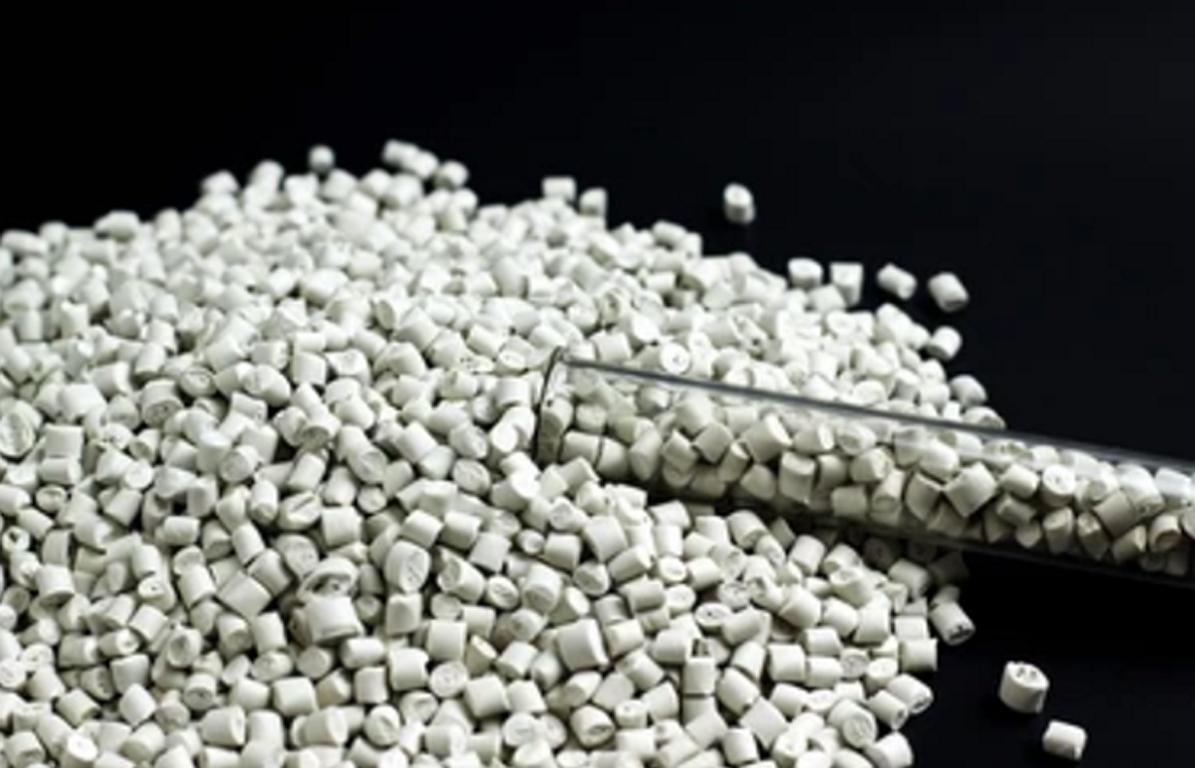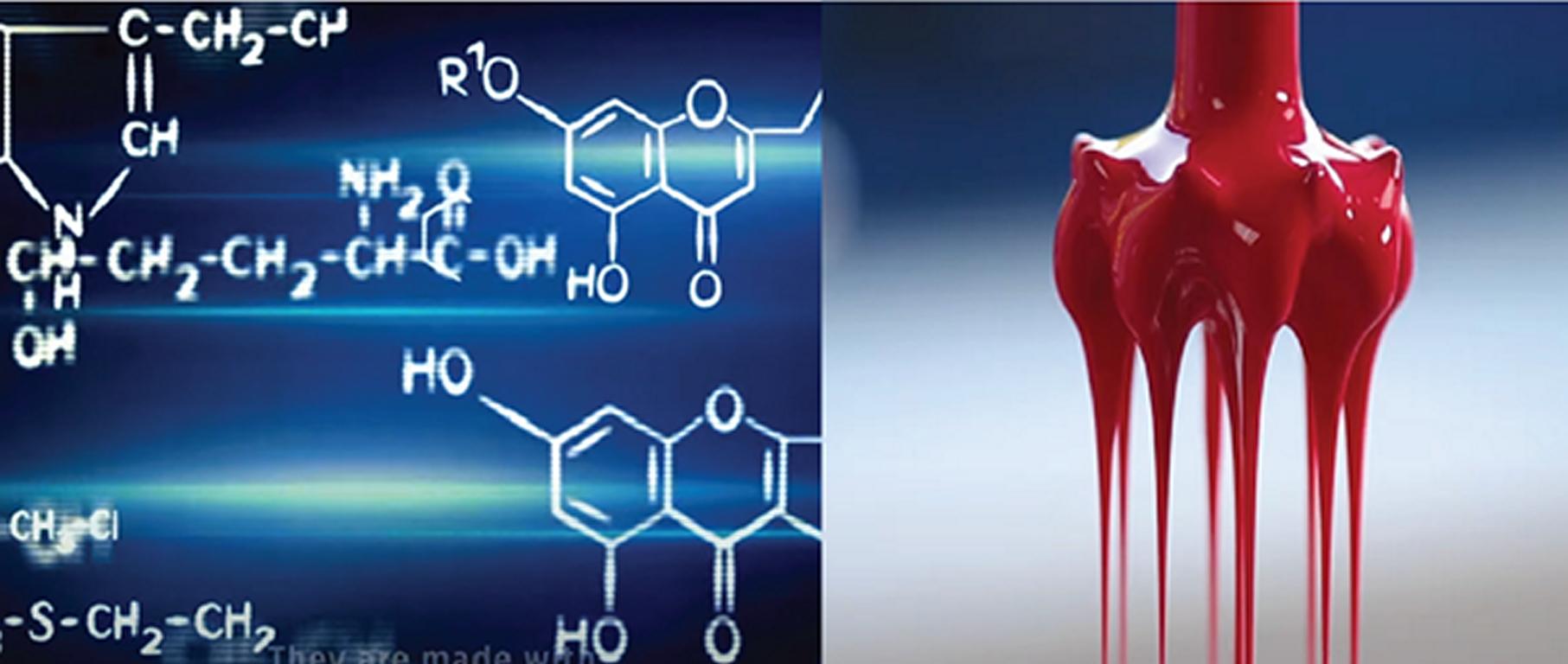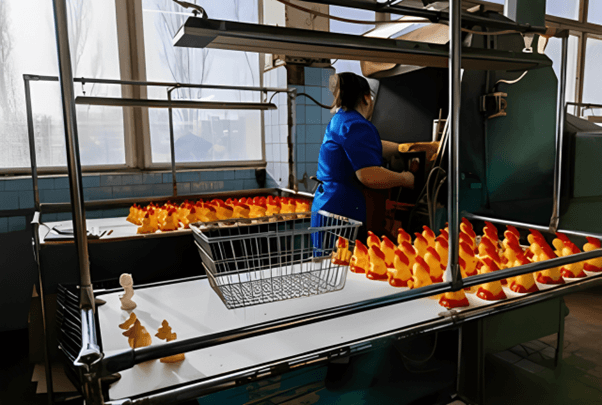TPE or Thermoplastic elastomers and Silicone are both elastomers i.e. they are polymers of rubbery material. They can recover their original shapes after being stretched to great extents. In this blog, we will discuss what is silicone and TPE materials. Moreover, we will also shed light on the main differences in the properties and uses of TPE and silicone.
What is TPE Material?
A thermoplastic elastomer is a flexible and rubber-like substance with plastic-like properties. It may be produced with a range of plastic production equipment such as injection molding, extrusion, and blow molding. TPE plastic material is a genuine thermoplastic that does not require vulcanization or curing. Thermoplastic elastomers are widely used in daily life. These materials are found in a variety of products, including consumer items, medical equipment, power tools, kitchenware, shoe insoles, and motorbike grips. TPE material can resist severe temperatures without warping or splitting.
Thermoplastic elastomers are tear-resistant yet soft to the touch. TPE material is used in grips like those that are commonly found in exercise equipment. TPE is also easily colorable and can be found in products all around us. The soft grips on toothbrushes, dog chew toys, and handles on garden tools are additional examples of TPE applications. Got to TPE injection molding page to know more about TPE molded parts.

What is Silicone?
Silicone is a broad category of fluids, resins, and elastomers. Silicones have a general formula of (R2SiO)x. Here, R can represent any of several organic groups. Their distinguishing characteristics include chemical inertness, resistance to water, and oxidation. Moreover, they are stable at both high and low temperatures. Also, they have a diverse set of commercial applications. Go to Silicone injection molding and is silicone safe page to know more.
Composition of TPE plastic
TPE plastic or Thermoplastic Rubber is a copolymer or a blend of polymers that mainly has the properties of rubber with the thermal processability of plastics. The composition usually includes:
- Elastomeric component: It is a type of network that offers flexibility and elasticity to a network or system.
- Thermoplastic component: Enables one to forge and reforge, casting, and re-casting.
The ratio of these can be adjusted, and common elastomers used in TPEs are styrene block copolymers (SBC), thermoplastic olefins (TPO), thermoplastic vulcanizates (TPV), and thermoplastic polyurethanes (TPU).
Composition of Silicone
Silicone is a synthetic polymer comprising silicon, oxygen, carbon, and hydrogen with minor proportions of other elements. These elements may include calcium, titanium, or aluminum. Its composition includes:
- Siloxane backbone: Chains of silicon atoms bonded in turn with oxygen atoms.
- Organic side groups: Bound to the silicon atoms, depending on the actual type of silicone which can be methyl, phenyl, and others.
What Is the Product Performance of TPE and Silicone?
TPE and Silicone are two polymers and each has its properties and types of polymer to use depending on performance, price, and laws. So, here is the analysis of the product performance of both TPEs and silicone.
1. Thermoplastic Elastomer TPE:
- Flexibility: Fine, extremely flexible, very soft material.
- Elasticity: Very flexible, regains the original shape after being bent or during flexing.
- Processability: Non-biodegradable, easy to mold and recycle, cheaper than metal and glass, and complement each other perfectly since they are both associated with pro plastics.
- Adhesion: It can easily interact with other thermoplastics and create a good bond.
- Durability: Somewhat lower, but still higher than non-silicone.
2. Silicone
- Heat Resistance: Resistant to high temperature as well as not subjected to any type of degrading.
- Elasticity: Remains flexible at high and low temperatures, therefore, more elastic material should be used.
- Chemical Resistance: They do not dissolve in water, oils, and many chemicals, they are also waterproof.
- Biocompatibility: Stable for usage in medicine and cooking.
- Durability: Highly durable, and long-lasting.

Properties of Both TPE vs Silicone Material
| Properties | TPE (Thermoplastic Elastomer) | Silicone |
| Flexibility | Very flexible | Flexible but firmer |
| Elasticity | Excellent | Excellent |
| Heat Resistance | Up to 120°C | Up to 250°C or higher |
| Melting Point | 170°C to 260°C | Does not have a true melting point, remains stable up to 250°C or higher |
| Chemical Resistance | Moderate | Excellent |
| UV Resistance | Moderate | Excellent |
| Durability | Good but less than silicone | Very high |
| Biocompatibility | It varies by type | Generally high |
| Processing | Easy to process and recycle | More complex processing |
| Cost | Generally lower | Higher |
| Tensile Strength | 5-30 MPa | 5-11 MPa |
| Elongation at Break | 200-800% | 100-900% |
| Hardness (Shore A) | 20-90 | 10-90 |
| Water Resistance | Moderate to high | High |
When to Use TPE palstic material?
Use TPE material when;
- Cost is a major factor.
- The temperature resistance is moderate for most of the products.
- Simple process and recyclability is required.
- The product requires soft and flexible material;
When to Use Silicone?
Use Silicone when;
- High-temperature resistance is necessary.
- Good chemical and UV resistance is crucial.
- Long-term stability and security must be achieved.
- The product under consideration is best suitable to be used as medical or food-related products.
Ways to Choose the Best TPE Materials?
Here are some ways that will help you choose the right TPE material;
- Application Requirements: Find out the strategic requirements of the application you have in mind (e.g., flexibility, hardness & temperature resistance).
- Mechanical Properties: The tensile strength, elongation, and tear strength have to be tested.
- Environmental Resistance: Always consider factors such as resistance to UV, chemicals, and heat.
- Regulatory Compliance: Facilitating compliance with related standards (e.g. of FDA or REACH).
- Processing Method: Match the TPE to your manufacturing process (for example injection molding, extrusion).
Ways to Choose the Best Silicone Materials?
The following factors will help you understand how to choose the best silicone material.
- Temperature Range: Choose a silicone that is suitable for the different ranges of temperatures in different applications.
- Chemical Exposure: Consider the resistance of silicone to different chemicals.
- Mechanical Properties: Determine the hardness, tensile strength, and % elongation.
- Regulatory Requirements: Make sure the silicone satisfies certain requirements, such as medical grade silicone or food grade silicone.
- Special Properties: Look for electrical insulation and transparency of silicon. Besides this, also check the stability of the color.
![]()
Is Thermoplastic Elastomer (TPE) Safe To Use?
TPE is considered a safe material in so far as it shall not undergo hard conditions that are likely to damage the Polymer matrix. Safety considerations include:
- Biocompatibility: TPEs are safe and even good for medical and food contact applications
- Non-toxicity: Non-toxicity is the general characteristic of most TPEs. However, there may be some dangerous additives included.
- Regulatory Compliance: Make sure that TEPs meet all the compliance and regulations standards.
You could move to is TPE safe page to know more about TPE material.
Is Silicone Safe To Use?
Silicone is generally safe for different uses in medical and food applications. Safety features include:
- Non-reactive and Inert: This material has no chemical compatibility issues. It does not chemically interact with most substances that come in contact with it. It makes it directly in contact with food and the skin.
- Biocompatibility: Medical silicone is used in implants and medical applications.
- Heat and Chemical Resistance: Under and or extreme conditions, silicone retains its stability hence deeming it safe.
- Regulatory Compliance: Make sure that the silicone you are using complies with all the requirements of safety.
You could move to is silicone safe page to know more about TPU material.
Differential between TPE vs Silicone
Here are some major differences between TPE vs Silicone.
1. Temperature resistance
Temperature resistance is one of the key distinctions between TPE and silicone. Silicone has no melting point and strong heat resistance. Its mechanical qualities do not degrade at temperatures between 200 and 450°C.
TPE plastic melts between 260 and 320°C. It has a poorer heat resistance. Because of this, TPE material is appropriate for uses that require recyclability and flexibility. They are best for consumer goods, automotive parts, and medical equipment.
2. Chemical resistance
The chemical resistance of silicone and TPE plastic is another difference. Silicone is impervious to the majority of chemicals, water, oxidation, and ozone. It cannot withstand steam, alkalis, acids, trichloroethylene, hydrocarbon fuels, or aromatic hydrocarbons. Because of this, silicone is appropriate for uses requiring a high degree of chemical stability, like insulation, kitchenware, and medical devices. Water, oils, greases, and some solvents are all resistant to TPE. Strong acids, bases, and oxidizing agents cannot break it. Because of this, TPE is appropriate for products that need a modest level of chemical stability.
3. Recyclability
. Because silicone takes high temperatures and specific catalysts to break down its bonds. so, it is not easily recyclable. As a result, silicone is more expensive to dispose of and less environmentally friendly. TPE plastic can be melted and reformed several times without losing its quality. Hence, it is easily recyclable. Because of this, reusing TPE plastic material is less expensive and more environmentally beneficial.
4. Processing method
The fourth difference lies in the processing methods of silicone and TPE material. Processes for handling silicone include liquid injection molding, compression molding, extrusion, and injection molding. Because of this, processing silicone becomes costlier and more difficult. However, it is easy to process TPE.
5. Colours
Both, Silicone Rubber and TPEs provide full spectrum color selections. Silicone rubber is typically translucent when used as a raw material. Colorants used during the manufacturing process mixing stage can produce hues. They can be opaque, translucent, or transparent. But you can easily generate a wide range of colors with TPE.
6. Complex Geometry
Silicone rubber fills extremely long, thin areas of a mold with ease and flows into molds with a range of wall thicknesses. into a mold to guarantee full fill-out. When developing TPE plastic parts, it is better to radius all sharp corners and maintain as uniform a part wall thickness as feasible.
7. Overmolding
Since Silicone rubber cures at high temperatures. It reduces the possibility of the substrate melting or deforming. Overmolded thermoplastic polymers (TPEs) when chosen correctly will produce a cohesive, strong connection with the thermoplastic substrate without the use of primers or adhesives.
8. UV Resistance
A transparent item that has turned yellow due to UV sterilization may still function flawlessly. But still, many people will find it unsettling. Since Silicone rubber is naturally resistant to UV light, it won’t deteriorate in the sun. Typically, these stabilizers work by selectively collecting UV rays. Then release the energy as low-temperature heat.
So, in short, the following table will summarize the major difference between TPE vs Silicone.
| Feature | TPE (Thermoplastic Elastomer) | Silicone |
| Material Type | It is a blend of rubber and plastic | It is a kind of synthetic polymer |
| Texture | TPE is often softer and more flexible | Firmer and even more elastic. |
| Durability | It is less durable and can tear easily, | It is more durable and has higher tear resistance |
| Heat Resistance | It offers lower heat resistance. So, it can melt | Offers high heat resistance |
| Cleaning | Much simple to clean and contains fewer pores. | It requires more care and has more pores. |
| Lifespan | A shorter lifespan. So, it can degrade over time. | Longer lifespan and even more stable. |
| Cost | Generally cheaper than other | More expensive than TPE |
| Hypoallergenic | Less likely to be hypoallergenic | Generally hypoallergenic |
| Weight | Lighter in weight | Heavier in weight |
| Color Options | Limited availability, but can fade | Available in a wide range of colors and colorfast. |
| Use Cases | Have many applications in making toys, seals, and grips. | Highly used to make Medical, culinary, and high-temperature applications. |
![]()
Conclusion
In conclusion, there are certain parallels and variations between the properties and applications of silicone and TPE. Although silicone is highly resistant to heat and chemicals, recycling it requires complicated procedures You can select either of the two materials based on your requirements and needs. In general, TPE is more flexible and leads to simple processing. it is a cost-effective solution for making different products at moderate temperatures. Besides this, it is recyclable and fits well with consumer goods. On the other hand, silicone has a high heat resistance and chemical stability. That is why, it can excel in high-temperature conditions. But this is a bit expensive and less flexible as compared to TPE material.
Frequently Asked Questions
Q1. What are the similarities between TPE and Silicone?
TPE and Silicone are similar in many ways such as, they both are elastomers. They both offer rubber-like flexibility and have numerous applications in making different products. Moreover, they are more durable and can be customized for specific properties, These properties make them non-toxic for safe use in medical and food items.
Q2. What are the key differences between TPE and Silicone?
A few properties of TPE are ease of processing, flexibility, and relatively low cost. However, it cannot handle high temperatures. Silicone is heat and chemical-resistant and is used for high temperatures or rigorous use.
Q3. Are TPE and Silicone suitable for medical use?
Absolutely yes, TPE is used in flexible medical applications, such as catheters. Silicone is mostly used due to its high heat stability and biocompatibility for core applications in the medical industry.






